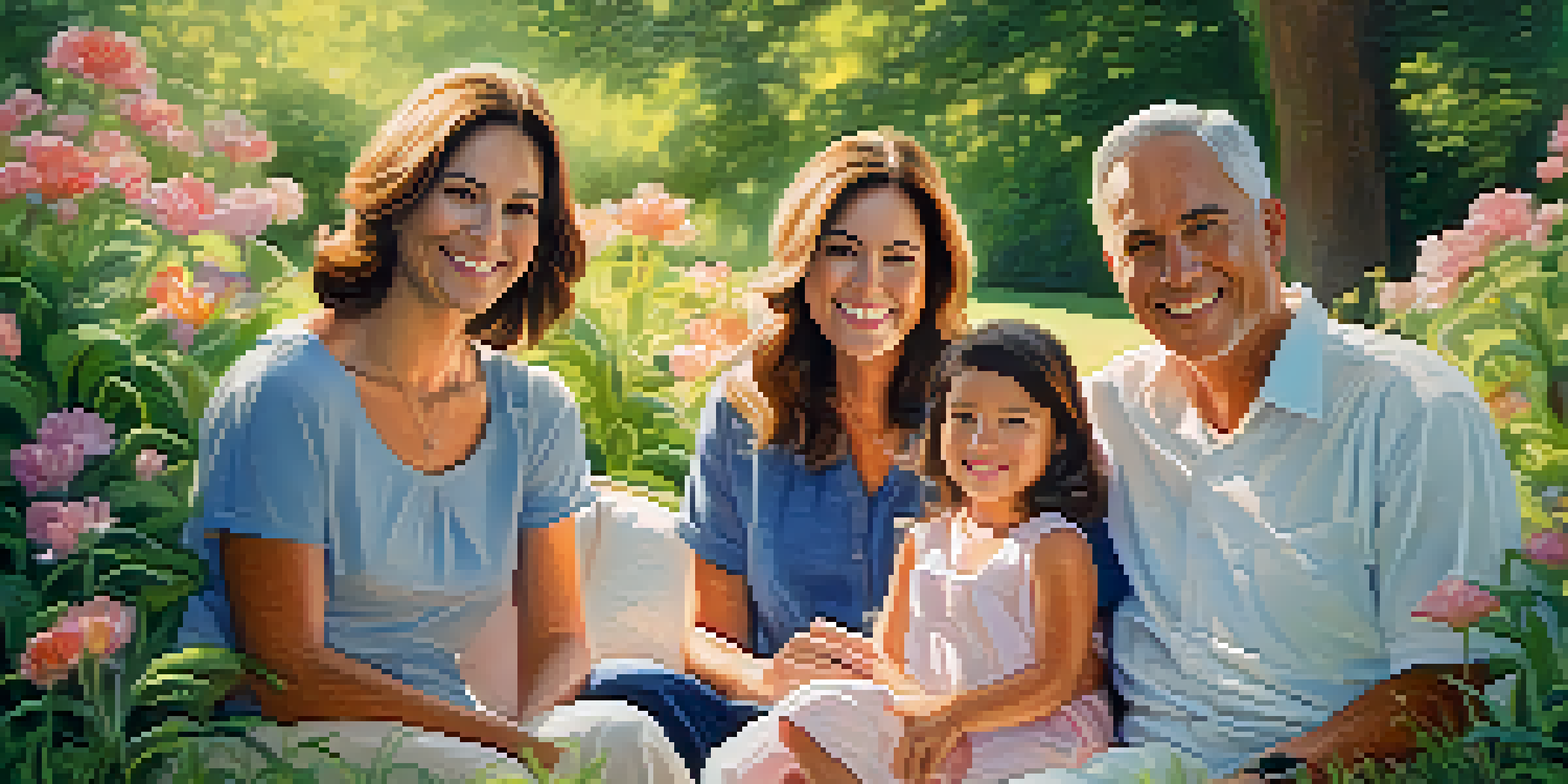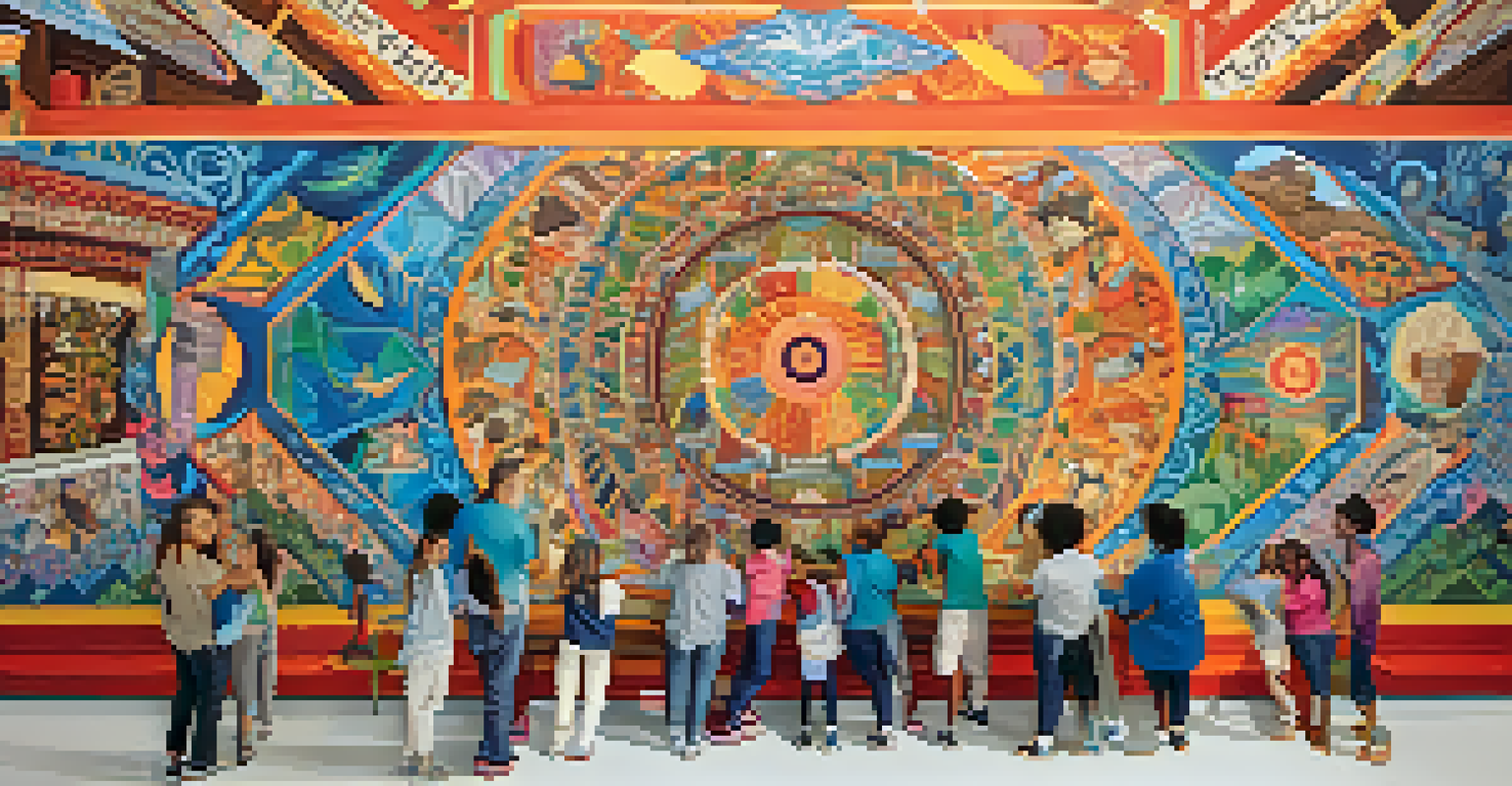Painting and Memory: A Dual Exploration of Human Connection

The Relationship Between Art and Memory
Art has always been a medium through which we express our memories. When we paint, we often capture moments that are significant to us, allowing those memories to be immortalized on canvas. This act of creation not only preserves our experiences but also enables us to revisit them whenever we desire.
Art is the most beautiful of all lies.
For instance, think about a family portrait that hangs in your living room. Each brushstroke holds a story, reminding us of laughter-filled gatherings and cherished times spent together. It’s this emotional resonance that connects us to our past, making art a powerful vehicle for memory.
Furthermore, studies show that engaging with art can enhance our memory retention. When we create or observe artwork, our brains activate areas responsible for memory, demonstrating the deep intertwining of art and our cognitive processes.
Painting as a Medium of Personal Reflection
When we paint, we often reflect on our personal experiences, thoughts, and emotions. This introspection can lead to a deeper understanding of ourselves and the world around us. Through colors and forms, we express feelings that might be difficult to articulate otherwise.

For example, an artist might use dark colors to convey sadness or bright hues to represent joy. This connection between emotion and color not only helps the artist process their feelings but also invites viewers to engage with those emotions, fostering empathy and understanding.
Art Preserves Personal Memories
Art captures significant moments, allowing us to revisit and reflect on our cherished experiences.
Ultimately, painting becomes a mirror, reflecting our inner landscapes. By revisiting these painted memories, we can confront past experiences, allowing for healing and growth.
Cultural Memory in Artistic Expressions
Art is not just a personal journey; it also serves as a collective memory for cultures. Paintings often depict historical events, customs, and traditions, preserving these narratives for future generations. Through art, communities can share their stories and heritage, forging connections across time.
The painter tries to master the art of memory, creating an image that holds the essence of experience.
Consider the famous artworks of the Renaissance, which reflect the societal values and beliefs of that era. These paintings allow us to glimpse into the past, understanding the context and emotions of people who lived centuries ago. They remind us that our cultural memories are not static; they evolve and adapt over time.
Moreover, when we engage with these cultural artworks, we participate in an ongoing dialogue with history. Each brushstroke serves as a reminder of our shared human experience, encouraging us to learn from the past as we move forward.
The Role of Memory in the Creative Process
Memory plays a crucial role in how artists create their work. Artists often draw inspiration from their own experiences or the stories of others, weaving these memories into their art. This process not only shapes the final piece but also enriches it with layers of meaning.
For instance, an artist might recall a childhood event while painting, infusing their work with nostalgia and emotion. This personal connection can resonate deeply with viewers, who may find their own memories reflected in the artwork.
Cultural Narratives Through Art
Art serves as a collective memory, preserving cultural stories and connecting communities across time.
In this way, memory becomes a palette from which artists paint, allowing them to create pieces that are both unique and universally relatable. The act of remembering transforms into a collaborative journey between the artist and the audience.
Art Therapy: Healing Through Painting
Art therapy harnesses the power of painting to promote emotional healing and expression. This therapeutic approach allows individuals to explore their feelings in a safe environment, using art as a means to process trauma and stress. Through painting, participants can articulate experiences that might otherwise remain unspoken.
Consider someone who has experienced loss. By creating a visual representation of their grief, they are able to confront and understand their emotions on a deeper level. This can lead to catharsis and a sense of relief, as art becomes a channel for healing.
As such, art therapy underscores the profound connection between painting and memory, showcasing how creativity can facilitate emotional recovery. This dual exploration of art not only helps individuals connect with their past but also empowers them to move forward.
Shared Memories: Collaborative Painting
Collaborative painting projects illustrate the power of shared memories in creating art. When people come together to paint, they contribute their unique perspectives, experiences, and emotions, resulting in a collective piece that embodies their shared history. This process fosters connection and strengthens bonds between participants.
Think of a community mural, where individuals contribute their own stories and symbols. As each person adds their touch, the mural transforms into a vibrant tapestry of memories, reflecting the community's diversity and unity. It’s a beautiful example of how painting can encapsulate collective experiences.
Healing Through Artistic Expression
Art therapy utilizes painting as a tool for emotional healing, enabling individuals to process trauma and express feelings.
Collaboration in art not only enhances creativity but also reinforces the idea that our memories are interconnected. By sharing our stories through art, we celebrate our differences while recognizing our shared humanity.
The Future of Painting and Memory
As technology evolves, so too does the relationship between painting and memory. Digital art forms offer new ways to capture and share memories, allowing individuals to create and preserve their experiences in innovative ways. This shift opens doors to explore how our memories can be expressed and interpreted through modern mediums.
Virtual reality, for example, can immerse viewers in a painted landscape, allowing them to experience memories in a unique and interactive way. This evolution challenges traditional notions of art and memory, prompting us to reconsider how we connect with our past.

Looking ahead, the fusion of technology and painting promises exciting possibilities for memory exploration. By embracing these advancements, we can continue to celebrate the profound connections between art and the human experience.